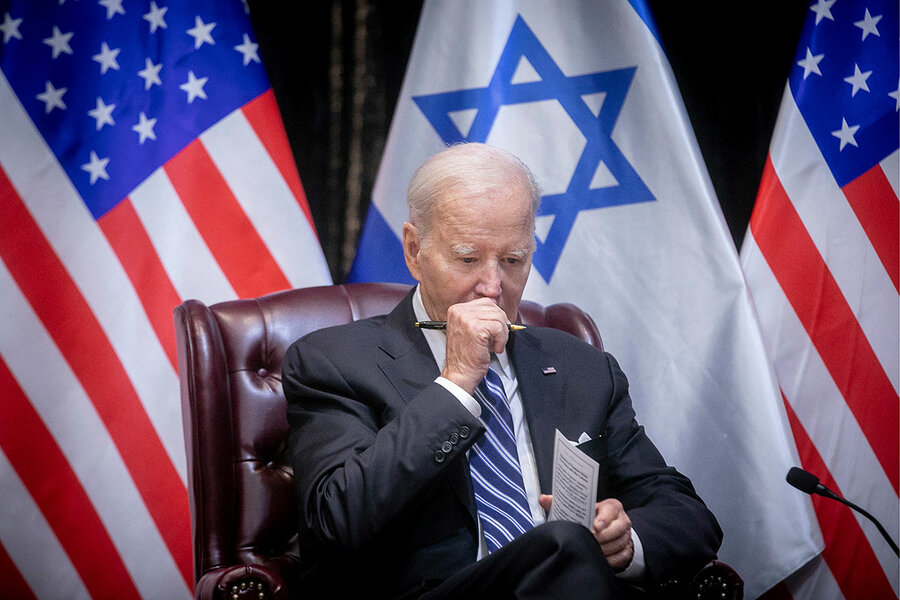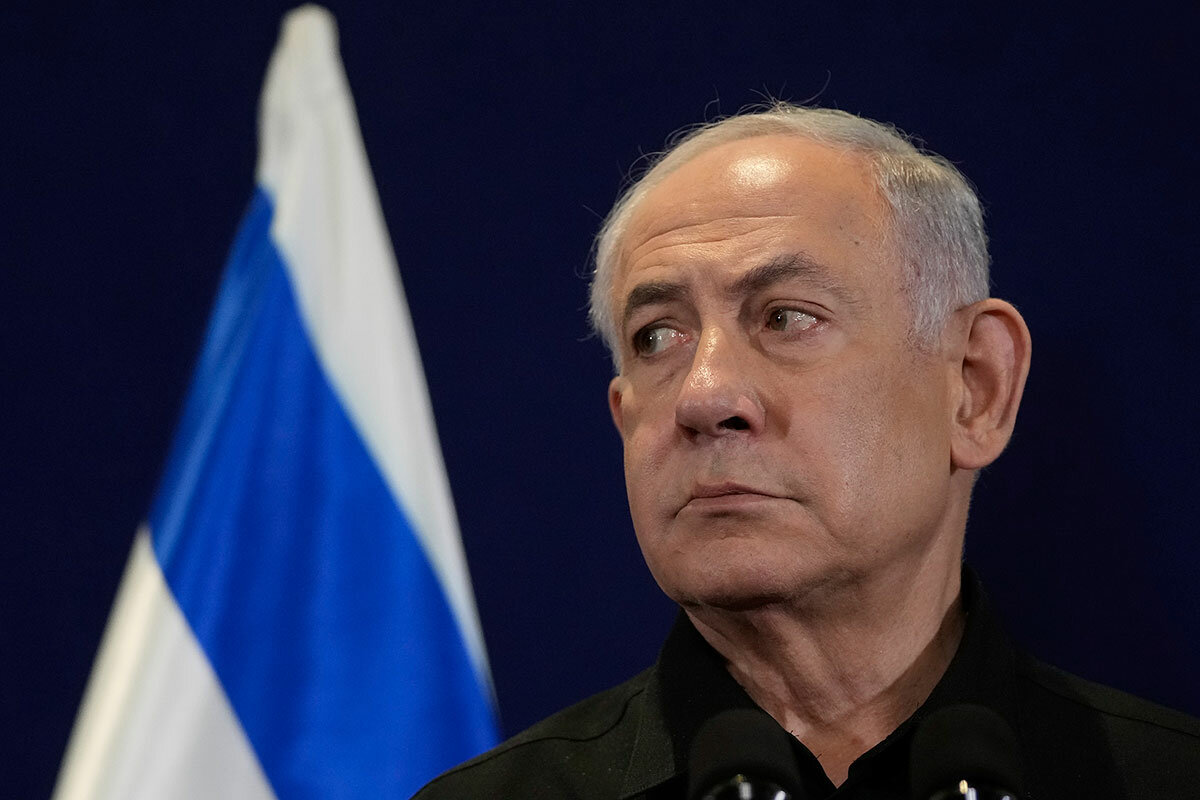Why Biden still seeks two-state solution to Israeli-Palestinian conflict
Loading...
| London
The contrast is jarring: between an inexorably escalating war in Gaza, and the almost mantralike declarations by U.S. President Joe Biden and other world leaders promoting their diplomatic vision of a postwar Middle East.
Especially since that vision – the “two-state solution,” with Israel and a Palestinian state living side by side in security, dignity, freedom, and peace – has been attempted without success ever since the establishment of the state of Israel in the 1948.
And now, due to the brutal Hamas attacks of Oct. 7 and the terrible civilian toll in Gaza, many Israelis and Palestinians are more reluctant than ever to talk peace.
Why We Wrote This
A story focused onOver 75 years the two-state solution to the Israeli-Palestinian conflict has proved to be unloved, unwelcome, and unworkable. But it remains indispensable.
Still, there is a web of compelling reasons the events since Oct. 7 have made the two-state solution more like a two-state imperative for Mr. Biden.
The geopolitical stakes are high. Although Washington’s main aim is to reopen at least the possibility of an eventual Israeli-Palestinian peace, that goal is only part of a broader postwar strategy.
The U.S. administration hopes to enlist like-minded partners, both Western allies and key moderate Arab states, to help foster a politically stable, economically robust alternative to Iran, whose influence is growing, and its regional proxy armies like Hamas.
Given the failure of past attempts to negotiate Israeli-Palestinian peace, it is hardly surprising that Mr. Biden’s promotion of the “two-state solution” has been greeted by a chorus of skeptics, including media pundits, think tank experts, and even former negotiators. A headline above one opinion piece last month in The New York Times perhaps best captured the mood: “The Two-State Platitude.”
So why, then, has Mr. Biden persisted in pressing the argument for a two-state peace?
The immediate catalyst has been the Israel-Hamas war, and not just for its brutality. The suffering and trauma on both sides are threatening to snuff out the merest thought of a two-state compromise in the immediate aftermath of the fighting.
But more importantly, the U.S. president feels a particularly urgent need to stand up now for his vision precisely because key leaders on both sides of the conflict want any compromise ruled out forever.
Hamas has long sought a single, Islamist state in Palestine and the elimination of the state of Israel.
And while Israeli Prime Minister Benjamin Netanyahu has sometimes paid lip service to the idea of a two-state peace, even before Oct. 7 he had made his opposition increasingly clear. The policy program of his current coalition, the most right-wing in Israel’s history, envisages Israel’s annexation of the occupied West Bank.
Mr. Biden’s focus on the two-state solution is an effort to keep at least the principle of Israeli-Palestinian compromise alive, not least because the prospect of open-ended conflict would leave Palestinians no alternative to Hamas, destabilize U.S.-allied Arab states, and embolden Iran.
But he’s also aware that mere words – two-state platitudes – will not suffice.
The practical steps that the United States and its allies might take will depend largely on the outcome of the current war. Will Hamas emerge hobbled, or sufficiently intact to claim a measure of victory? Will the Americans manage to enlist international support, and funding, to rebuild Gaza?
And will Mr. Netanyahu, blamed by many Israelis for the failure to prevent Hamas’ atrocities and abductions, hold on as prime minister?
President Biden appears to have decided that, at the very least, Washington must reengage diplomatically with the Israel-Palestinian conflict.
That, in itself, would represent a significant shift from the past two decades, under successive administrations, during which the U.S. concluded a peace agreement simply wasn’t possible and thus was not worth the investment of Washington’s political and diplomatic capital.
Mr. Biden’s immediate focus is likely to be less on full-scale peace than on reviving a peace process, explicitly based on the principle of a two-state compromise, with Arab and wider international support. That, too, would represent a change: Even before Oct. 7, there had been no meaningful Israel-Palestinian negotiations for nearly a decade.
The key question is whether a new negotiating initiative could yield visible, credible progress.
On one point, the skeptics are clearly right: All past attempts to secure a final, two-state peace have failed. In the wake of the war in Gaza, it’s hard to imagine any quick breakthroughs.
But the history of those failed attempts is complex, and not completely without hope.
Since 1947, when a nascent Israel embraced a United Nations General Assembly resolution backing two states in Palestine while Arab states rejected it, peace bids have foundered on a mix of action and inaction on both sides.
Still, the last major effort – a Camp David summit in 2000 at which President Bill Clinton tried to mediate agreement between Israel’s Prime Minister Ehud Barak and the late Palestinian leader Yasser Arafat – came closer to success than any previous attempt.
And today Mr. Biden, moderate Arab states, and much of the wider world seem to have concluded that the extraordinary violence of the past two months has made a serious and sustained new effort at such a compromise necessary.
Once again, the two-state solution – unloved, unwelcome, and unworkable though it has proved to be over the years – appears also to be indispensable.








